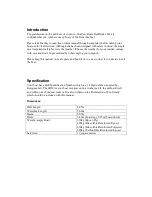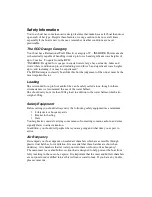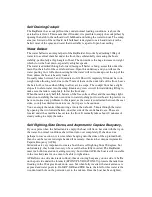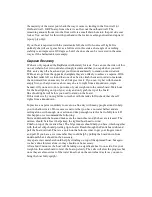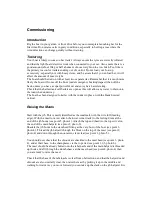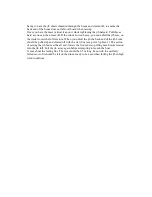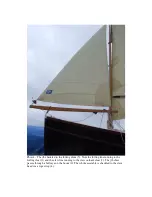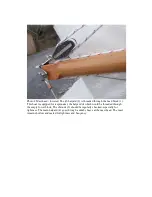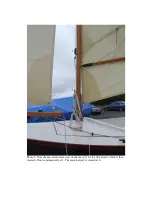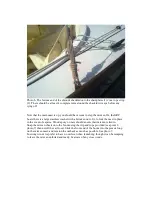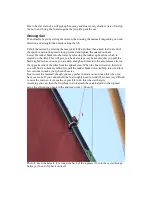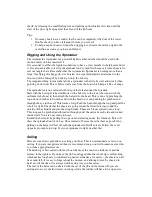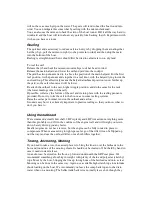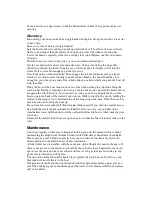
the majority of the water pours back the way it came in, landing in the floor well (or
Outboard well - GRP boats), from where it can flow out the outboard well. The
remaining amount floods into the floor well via a small drain hole into the port side seat
locker. You can feel for this with your hand in the locker, reaching outward and upward
(epoxy ply only).
If your boat is capsized with the water tanks full, she will of course self right. It is
unlikely she will ever get as far as a full invert in this state as her angle of vanishing
stability is an impressive 120 degrees, but if she does she can be recovered in the same
way as if the ballast tank were empty.
Capsize Recovery
We have only capsized the BayRaider deliberately for tests. You can see the video of this
on our website, but we would also strongly recommend that you capsize her yourself.
Pick a nice day off a beach and get your friends and family to stand on one side deck.
Without a rope from the opposite chainplate they are unlikely to achieve a capsize. With
the ballast tanks full we found that one of us had to climb the mast in order to maintain
the downward force necessary for a 90 degree invert. If you can, try her with the tanks
empty first, so that you can see how easy she is to right from a knockdown, single
handed. All you need to do is put some of your weight onto the centreboard. Watch out
for the boat righting on top of you, so try and only grab the tip of the board.
She should right well before you need to stand on the board.
If this works well, you might like to test her with the tanks full to check that she self
rights from a knockdown.
In practice a capsize is unlikely to occur on a fine day with many people around to help
you, in shallow water. Worse case scenario is that you have no water ballast and are
sailing alone, with enough wave action and deep enough water for her to fully invert. If
this happens, we recommend the following:
Swim underneath the boat and make sure the main sheet and jib sheet are released. The
mizzen should be left as it helps keep the righted boat head to wind.
Climb on top of the inverted boat. The bilge runners should help you here, which together
with the keel strip should provide grip to board. Reach through the Centreboard slot and
pull the board vertical. There is a notch on the bottom corner to get your fingers round
and pull. If you have a crew member they could help by pulling the board down from
underneath, but it should not be necessary.
Any spare crew member should help by climbing on top of the upturned boat, but again,
we have done this test alone, so they should not be necessary.
After about 2 minutes, the boat will be taking on a significant heel to one side. Use your
weight on the centreboard to lever the boat up slowly. The sails will slow the progress but
once they are almost clear of the water kneel out on the centreboard as far as you can to
bring the boat fully upright.



